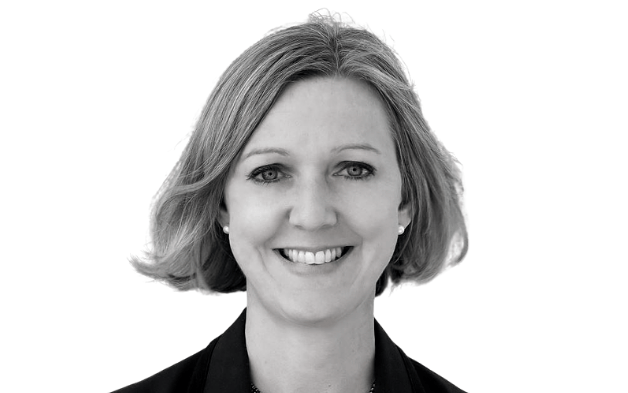Imagine a world where resources used in one industry are used again in another so that maximum value is extracted, recovered and used again. Or where consumers replace users as people lease – rather than own – products, through collective ownership or sharing platforms. Imagine renewable energy and the continuous cycling of materials have slashed reliance on non-renewable natural resources for good.
It’s called a circular economy – the alternative to today’s traditional, linear economic model of ‘take, make and dispose’. And far-sighted investors should embrace it for both long-term returns and impact, a new report urges.
The report, Investing in the New Industrial (R)evolution, comes from The Investment Integration Project (TIIP) and impact investment community Toniic. It builds on themes explored in TIIP’s 2016 Tipping Points report, which found more investors taking practical steps to incorporate global issues such as health, food and energy into their strategies, in a ‘systems-level’ approach.
The next evolutionary step in a systems-level approach is to adopt investment strategies to integrate circular-economy principles.
The report references compelling statistics. In 2014, America’s largest businesses sent 342 million metric tons of waste to landfills and incinerators in millions of dollars of lost value; each year, the global economy disposes of 95 per cent of plastic packaging, worth an estimated $80 billion-$120 billion; the average car in Europe is parked 92 per cent of the time and the average office is used only 35 per cent to 50 per cent of the time, even during working hours.
“Increasingly, a linear business carries risks. Just as there is a growing awareness of the risk of climate change to the economy, we can also see that not adopting circular principles will eventually lead companies to a lagging market position and decreased valuations,” argues Frido Kraanen, director co-operative and corporate sustainability at PGGM, the Dutch manager with $220 billion in pension assets under management and a member of the Circular Economy 100, a group dedicated to building the circular economy.
“Solutions often embrace new smart technology, sharing platforms or ownership models, giving us insight into potential investment opportunities,” Kraanen says. “The transition to a sustainable, circular business model will be increasingly demanded, not just as a nice extra for reputational purposes, but as a core tenet of business.”
A lens through which to invest
The authors of the TIIP/Toniic report urge investors to include circular-economy principles in their investment decisions, the same way some have included a systems-level approach – as a lens through which to invest, rather than an asset class in itself.
The report argues investors should state a commitment to the circular economy and prioritise it in stock selection and portfolio construction. They should screen to favour companies with innovative reuse strategies and investments in technology, products and services that will accelerate the adoption of circular-economy practices.
Active investor engagement with companies will encourage them to move from linear to circular operating models, and investors should introduce targeted programs and select managers that prioritise circular-economy practices.
Opportunities are emerging
The authors acknowledge “it may still be difficult” to identify circular economy opportunities in each asset class but believe they are beginning to emerge. Active stock selection could include companies such as clothing manufacturer and retailer H&M, whose circular policies include providing vouchers to customers who return used clothes, and reusing those items either as new clothes or in other industries.
Computer manufacturer and software developer IBM could be another choice. It sells so much refurbished equipment that, in 2014, 97 per cent of about 36 million tons of harvested computer scrap was resold, reused or sent to material recycling.
Opportunities in fixed income include the municipal bond market, where investors could target assets such as water utilities and waste-water treatment facilities, making progress on reuse and recycling. Real-estate investment could focus on properties with water recycling or that draw zero net energy from the grid.
More opportunities will emerge as investor pressure encourages incremental progress towards adoption of circular-economy strategies in large corporations or at an industry-wide level. Eventually, the investment universe will be immense.
“Given the wide applicability of the circular economy, its increased adoption will create investment opportunities that span asset classes, industries and geographies,” the report’s authors state. “The increasing need for capital will help meet the growing demand for investments in global systems. Investors and asset managers would benefit from investment opportunities that deliver both measurable impact and resilient financial returns.”
Obstacles to overcome
Developing a circular economy does hold many challenges. Materials can be hard to identify and separate after use and there are few cost-efficient ways to separate materials without degradation. For example, only about $3 worth of raw materials can be extracted from a smartphone that contains roughly $16 worth of raw materials. Also, unlocking the circular economy’s full potential will require the collaboration of multiple stakeholders; governments and other regulatory bodies must ensure the adequacy of legal frameworks and create incentives.
The road is long but PGGM’s Kraanen is clear: the potential for a new economic order is huge and investors need to get on board.
“The move towards a circular economy should not be a sub-divisional goal of some far-removed CSR [corporate social responsibility] department, but an integral part of investment strategy,” Kraanen says. “Through capital and engagement, financiers should be supporting, incentivising or otherwise promoting the shift.”



We’re happy to see this space developing further. This will
help new start up like our’s in building a much more resource efficient environment across the world.